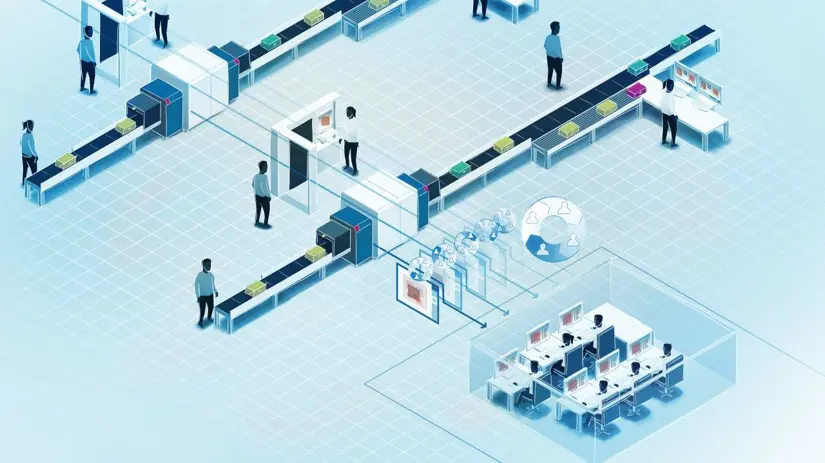Restoring passenger confidence by minimising contact between people and surfaces will be important as air travel begins to pick up. Technology, such as remote screening, can help.
The changing face of air travel
As the aviation industry begins to build its action plan for reinstating operations, airports will be looking to rapidly regain the confidence of travelers through the introduction of heightened safety measures. Many new measures will be introduced to increase hygiene and reduce person-to-person or person-to-surface contact along the entire passenger journey. Technology will certainly play a key role as the industry drives towards a more and more automated process.
Fortunately, there are already solutions available that can effectively support a low contact operation – remote screening is a particularly compelling example
Keeping the distance
Even after it has been declared safe to travel many travelers will still be concerned about going through crowded security checkpoints. Deploying image analysts in a central location away from the checkpoint has been proven to offer many benefits and in this case, would allow for fewer points of human contact, making the process safer for both staff and passengers.
Depending on what is found on the scanned images, each tray is either sent straight through to the passenger or automatically diverted to a recheck point. Any suspicious areas are marked and classified on the images so operators back at the checkpoint know exactly where to target secondary examinations – making rechecks quicker and less intrusive.
Operational flexibility
Remote screening improves operational efficiency and its flexibility could prove particularly useful in helping create distance between passengers. Analysts are able to focus in the calm environment away from the checkpoint and make faster, accurate decisions. This in turn supports a smoother flow of baggage through screening, making it easier to keep people apart and avoid potential bunching.
Networked images are collected from all security lanes across the airport and delivered to the next available operator – making more efficient use of staff resources as images from both quiet and very busy lanes are shared equally. Closing down some lanes in each terminal would help maintain space between people and images could be channelled to one central team of analysts.
This principle can be applied to groups of nationwide airports linking hundreds of checkpoints to a central analysis facility. Smaller airports could become part of one network with all image analysis handled off-site; and international networking also has enormous potential.
Resourceful technology
Maintaining social distancing and strict hygiene will be crucial factors as the industry strives to restore customer confidence in flying whilst, of course, protecting staff from infection and ensuring business continuity. As remote screening provides a private location for image analysts which is easier to sterilise than the public areas; and contributes to a contact free environment and a less crowded checkpoint, this technology certainly has much to offer.

